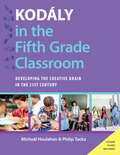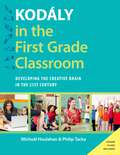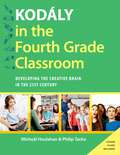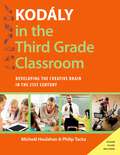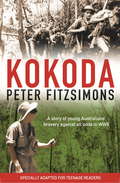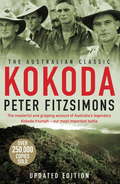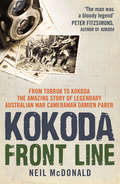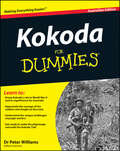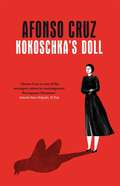- Table View
- List View
Knoydart: A History
by Denis RixonKnoydart - the northern edge of the 'Rough Bounds' is one of the most evocative names in Scotland. This text offers a history of Knoydart from the earliest times to the present day. A remote and desolate peninsula, its name derives from Viking settlers who only reckoned it worth three ouncelands - compared to five for the island of Eigg. Its warlike but impoverished inhabitants caused endless problems for their neighbours during the 17th century before becoming notorious in the 18th century under the leadership of Coll of Barrisdale. His protection racket has bequeathed the word 'blackmail' to the English language and he was notorious across Scotland. For the Jacobites, as well, Knoydart was a fertile recruiting ground. In the 18th and 19th centuries the area suffered large scale emigration, partly as a result of the brutal clearances of 1853. A further long century of decline followed, during which sheep and then deer were preferred to people. In 1948 discontent swelled again and it became the scene of the famous land-raid by the 'Seven men from Knoydart'. It has changed hands more often in the last 150 years than in the previous 700 years. The land continues to lie at the heart of the Knoydart problem and the book attempts to place events in their larger historical context. This is the struggle of a community to preserve itself against the harshness of the environment and the cynical exploitation of man.
Koba The Dread: Laughter And The Twenty Million (Vintage International Series)
by Martin AmisKoba the Dread is the successor to Amis's celebrated memoir, Experience. It addresses itself to the central lacuna of twentieth-century thought: the indulgence of communism by Western intellectuals. In between the personal beginning and the personal ending, Amis gives us perhaps the best one hundred pages ever written about Stalin: Koba the Dread, Iosif the Terrible. The author's father, Kingsley Amis, was 'a Comintern dogsbody' (as he would come to put it) from 1941 to 1956. His second-closest, and later in life his closest friend, was Robert Conquest, whose book The Great Terror was second only to Solzhenitsyn's The Gulag Archipelago in undermining the USSR. Amis's remarkable memoir explores these connections. Stalin said that the death of one person was tragic, the death of a million a mere 'statistic'. Koba the Dread, during whose course the author absorbs a particular, a familial death, is a rebuttal of Stalin's aphorism.
Kodály in the Fifth Grade Classroom: Developing the Creative Brain in the 21st Century (Kodaly Today Handbook Series)
by Micheal Houlahan Philip TackaSince the mid-twentieth century, Zoltán Kodály's child-developmental philosophy for teaching music has had significant positive impact on music education around the world, and is now at the core of music teaching in the United States and other English speaking countries. The Kodály Today handbook series is the first comprehensive system to update and apply the Kodály concepts to teaching music in elementary school classrooms. Kodály in the Fifth Grade Classroom provides teachers with a step-by-step road map for developing children's performance, creative movement, and literacy skills in an organic and thoughtful manner. Through six years of field-testing with music kindergarten teachers in the United States, Great Britain, and Hungary (the home country of Zoltán Kodály), authors Micheál Houlahan and Philip Tacka have developed a methodology specifically for 21st century classrooms. Houlahan and Tacka use the latest research findings in cognition and perception to create a system not only appropriate for the developmental stages of first grade students but also one which integrates vertically between elementary music classes. The methods outlined in this volume encourage greater musical ability and creativity in children by teaching them to sing, move, play instruments, and develop music literacy skills. In addition, Kodály in the Fifth Grade Classroom promotes critical thinking, problem solving, and collaboration skills. Although the book uses the Kodály philosophy, its methodology has also been tested by teachers certified in Orff and Dalcroze, and has proven an essential guide for teachers no matter what their personal philosophy and specific training might be. Numerous children's songs are incorporated into Kodály in the Fifth Grade Classroom, as well as over 35 detailed lesson plans that demonstrate how music and literacy curriculum goals are transformed into tangible musical objectives. Scholarly yet practical and accessible, this volume is sure to be an essential guide for kindergarten and early childhood music teachers everywhere.
KODALY IN THE FIFTH GRADE KTHS C: Developing the Creative Brain in the 21st Century (Kodaly Today Handbook Series)
by Philip Tacka Micheal HoulahanSince the mid-twentieth century, Zoltán Kodály's child-developmental philosophy for teaching music has had significant positive impact on music education around the world, and is now at the core of music teaching in the United States and other English speaking countries. The Kodály Today handbook series is the first comprehensive system to update and apply the Kodály concepts to teaching music in elementary school classrooms. Kodály in the Fifth Grade Classroom provides teachers with a step-by-step road map for developing children's performance, creative movement, and literacy skills in an organic and thoughtful manner. Through six years of field-testing with music kindergarten teachers in the United States, Great Britain, and Hungary (the home country of Zoltán Kodály), authors Micheál Houlahan and Philip Tacka have developed a methodology specifically for 21st century classrooms. Houlahan and Tacka use the latest research findings in cognition and perception to create a system not only appropriate for the developmental stages of first grade students but also one which integrates vertically between elementary music classes. The methods outlined in this volume encourage greater musical ability and creativity in children by teaching them to sing, move, play instruments, and develop music literacy skills. In addition, Kodály in the Fifth Grade Classroom promotes critical thinking, problem solving, and collaboration skills. Although the book uses the Kodály philosophy, its methodology has also been tested by teachers certified in Orff and Dalcroze, and has proven an essential guide for teachers no matter what their personal philosophy and specific training might be. Numerous children's songs are incorporated into Kodály in the Fifth Grade Classroom, as well as over 35 detailed lesson plans that demonstrate how music and literacy curriculum goals are transformed into tangible musical objectives. Scholarly yet practical and accessible, this volume is sure to be an essential guide for kindergarten and early childhood music teachers everywhere.
KODALY IN THE FIRST GRADE CLASSR KTHS C: Developing the Creative Brain in the 21st Century (Kodaly Today Handbook Series)
by Philip Tacka Micheal HoulahanSince the mid-twentieth century, Zoltán Kodály's child-developmental philosophy for teaching music has had significant positive impact on music education around the world, and is now at the core of music teaching in the United States and other English speaking countries. The Kodály Today handbook series is the first comprehensive system to update and apply the Kodály concepts to teaching music in elementary school classrooms. Kodály in the First Grade Classroom provides teachers with a step-by-step road map for developing children's performance, creative movement, and literacy skills in an organic and thoughtful manner. Through six years of field-testing with music kindergarten teachers in the United States, Great Britain, and Hungary (the home country of Zoltán Kodály), authors Micheál Houlahan and Philip Tacka have developed a methodology specifically for 21st century classrooms. Houlahan and Tacka use the latest research findings in cognition and perception to create a system not only appropriate for the developmental stages of first grade students but also one which integrates vertically between elementary music classes. The methods outlined in this volume encourage greater musical ability and creativity in children by teaching them to sing, move, play instruments, and develop music literacy skills. In addition, Kodály in the First Grade Classroom promotes critical thinking, problem solving, and collaboration skills. Although the book uses the Kodály philosophy, its methodology has also been tested by teachers certified in Orff and Dalcroze, and has proven an essential guide for teachers no matter what their personal philosophy and specific training might be. Numerous children's songs are incorporated into Kodály in the First Grade Classroom, as well as over 35 detailed lesson plans that demonstrate how music and literacy curriculum goals are transformed into tangible musical objectives. Scholarly yet practical and accessible, this volume is sure to be an essential guide for kindergarten and early childhood music teachers everywhere.
Kodály in the First Grade Classroom: Developing the Creative Brain in the 21st Century (Kodaly Today Handbook Series)
by Micheal Houlahan Philip TackaSince the mid-twentieth century, Zoltán Kodály's child-developmental philosophy for teaching music has had significant positive impact on music education around the world, and is now at the core of music teaching in the United States and other English speaking countries. The Kodály Today handbook series is the first comprehensive system to update and apply the Kodály concepts to teaching music in elementary school classrooms. Kodály in the First Grade Classroom provides teachers with a step-by-step road map for developing children's performance, creative movement, and literacy skills in an organic and thoughtful manner. Through six years of field-testing with music kindergarten teachers in the United States, Great Britain, and Hungary (the home country of Zoltán Kodály), authors Micheál Houlahan and Philip Tacka have developed a methodology specifically for 21st century classrooms. Houlahan and Tacka use the latest research findings in cognition and perception to create a system not only appropriate for the developmental stages of first grade students but also one which integrates vertically between elementary music classes. The methods outlined in this volume encourage greater musical ability and creativity in children by teaching them to sing, move, play instruments, and develop music literacy skills. In addition, Kodály in the First Grade Classroom promotes critical thinking, problem solving, and collaboration skills. Although the book uses the Kodály philosophy, its methodology has also been tested by teachers certified in Orff and Dalcroze, and has proven an essential guide for teachers no matter what their personal philosophy and specific training might be. Numerous children's songs are incorporated into Kodály in the First Grade Classroom, as well as over 35 detailed lesson plans that demonstrate how music and literacy curriculum goals are transformed into tangible musical objectives. Scholarly yet practical and accessible, this volume is sure to be an essential guide for kindergarten and early childhood music teachers everywhere.
KODALY IN THE FOURTH GRADE CLASSR KTHS C: Developing the Creative Brain in the 21st Century (Kodaly Today Handbook Series)
by Philip Tacka Micheal HoulahanSince the mid-twentieth century, Zoltán Kodály's child-developmental philosophy for teaching music has had significant positive impact on music education around the world, and is now at the core of music teaching in the United States and other English speaking countries. The Kodály Today handbook series is the first comprehensive system to update and apply the Kodály concepts to teaching music in elementary school classrooms. Kodály in the Fourth Grade Classroom provides teachers with a step-by-step road map for developing children's performance, creative movement, and literacy skills in an organic and thoughtful manner. Through six years of field-testing with music teachers in the United States, Great Britain, and Hungary (the home country of Zoltán Kodály), authors Micheál Houlahan and Philip Tacka have developed a methodology specifically for 21st century classrooms. Houlahan and Tacka use the latest research findings in cognition and perception to create a system not only appropriate for the developmental stages of fourth graders but also one which integrates vertically between elementary music classes. The methods outlined in this volume encourage greater musical ability and creativity in children by teaching them to sing, move, play instruments, and develop music literacy skills. In addition, Kodály in the Fourth Grade Classroom promotes critical thinking, problem solving, and collaboration skills. Although the book uses the Kodály philosophy, its methodology has also been tested by teachers certified in Orff and Dalcroze, and has proven an essential guide for teachers no matter what their personal philosophy and specific training might be. Over 100 children's books are incorporated into Kodály in the Fourth Grade Classroom, as well as 35 detailed lesson plans that demonstrate how music and literacy curriculum goals are transformed into tangible musical objectives. Scholarly yet practical and accessible, this volume is sure to be an essential guide for elementary music teachers everywhere.
Kodály in the Fourth Grade Classroom: Developing the Creative Brain in the 21st Century (Kodaly Today Handbook Series)
by Micheal Houlahan Philip TackaSince the mid-twentieth century, Zoltán Kodály's child-developmental philosophy for teaching music has had significant positive impact on music education around the world, and is now at the core of music teaching in the United States and other English speaking countries. The Kodály Today handbook series is the first comprehensive system to update and apply the Kodály concepts to teaching music in elementary school classrooms. Kodály in the Fourth Grade Classroom provides teachers with a step-by-step road map for developing children's performance, creative movement, and literacy skills in an organic and thoughtful manner. Through six years of field-testing with music teachers in the United States, Great Britain, and Hungary (the home country of Zoltán Kodály), authors Micheál Houlahan and Philip Tacka have developed a methodology specifically for 21st century classrooms. Houlahan and Tacka use the latest research findings in cognition and perception to create a system not only appropriate for the developmental stages of fourth graders but also one which integrates vertically between elementary music classes. The methods outlined in this volume encourage greater musical ability and creativity in children by teaching them to sing, move, play instruments, and develop music literacy skills. In addition, Kodály in the Fourth Grade Classroom promotes critical thinking, problem solving, and collaboration skills. Although the book uses the Kodály philosophy, its methodology has also been tested by teachers certified in Orff and Dalcroze, and has proven an essential guide for teachers no matter what their personal philosophy and specific training might be. Over 100 children's books are incorporated into Kodály in the Fourth Grade Classroom, as well as 35 detailed lesson plans that demonstrate how music and literacy curriculum goals are transformed into tangible musical objectives. Scholarly yet practical and accessible, this volume is sure to be an essential guide for elementary music teachers everywhere.
Kodály in the Third Grade Classroom: Developing the Creative Brain in the 21st Century (Kodaly Today Handbook Series)
by Micheal Houlahan Philip TackaSince the mid-twentieth century, Zoltán Kodály's child-developmental philosophy for teaching music has had significant positive impact on music education around the world, and is now at the core of music teaching in the United States and other English speaking countries. The Kodály Today handbook series is the first comprehensive system to update and apply the Kodály concepts to teaching music in elementary school classrooms. Kodály in the Third Grade Classroom provides teachers with a step-by-step road map for developing children's performance, creative movement, and literacy skills in an organic and thoughtful manner. Through six years of field-testing with music kindergarten teachers in the United States, Great Britain, and Hungary (the home country of Zoltán Kodály), authors Micheál Houlahan and Philip Tacka have developed a methodology specifically for 21st century classrooms. Houlahan and Tacka use the latest research findings in cognition and perception to create a system not only appropriate for the developmental stages of third grade students but also one which integrates vertically between elementary music classes. The methods outlined in this volume encourage greater musical ability and creativity in children by teaching them to sing, move, play instruments, and develop music literacy skills. In addition, Kodály in the Third Grade Classroom promotes critical thinking, problem solving, and collaboration skills. Although the book uses the Kodály philosophy, its methodology has also been tested by teachers certified in Orff and Dalcroze, and has proven an essential guide for teachers no matter what their personal philosophy and specific training might be. Numerous children's songs are incorporated into Kodály in the Third Grade Classroom, as well as over 35 detailed lesson plans that demonstrate how music and literacy curriculum goals are transformed into tangible musical objectives. Scholarly yet practical and accessible, this volume is sure to be an essential guide for kindergarten and early childhood music teachers everywhere.
Kodiak Kreol: Communities of Empire in Early Russian America
by Gwenn A. MillerFrom the 1780s to the 1820s, Kodiak Island, the first capital of Imperial Russia's only overseas colony, was inhabited by indigenous Alutiiq people and colonized by Russians. Together, they established an ethnically mixed "kreol" community. Against the backdrop of the fur trade, the missionary work of the Russian Orthodox Church, and competition among Pacific colonial powers, Gwenn A. Miller brings to light the social, political, and economic patterns of life in the settlement, making clear that Russia's modest colonial effort off the Alaskan coast fully depended on the assistance of Alutiiq people. In this context, Miller argues, the relationships that developed between Alutiiq women and Russian men were critical keys to the initial success of Russia's North Pacific venture.Although Russia's Alaskan enterprise began some two centuries after other European powers—Spain, England, Holland, and France—started to colonize North America, many aspects of the contacts between Russians and Alutiiq people mirror earlier colonial episodes: adaptation to alien environments, the "discovery" and exploitation of natural resources, complicated relations between indigenous peoples and colonizing Europeans, attempts by an imperial state to moderate those relations, and a web of Christianizing practices. Russia's Pacific colony, however, was founded on the cusp of modernity at the intersection of earlier New World forms of colonization and the bureaucratic age of high empire. Miller's attention to the coexisting intimacy and violence of human connections on Kodiak offers new insights into the nature of colonialism in a little-known American outpost of European imperial power.
Koh-i-Noor: The History of the World's Most Infamous Diamond
by William Dalrymple Anita AnandThe first comprehensive and authoritative history of the Koh-i-Noor, arguably the most celebrated and mythologised jewel in the world. On 29 March 1849, the ten-year-old maharaja of the Punjab was ushered into the magnificent Mirrored Hall at the centre of the great fort in Lahore. There, in a public ceremony, the frightened but dignified child handed over great swathes of the richest country in India in a formal Act of Submission to a private corporation, the East India Company. He was also compelled to hand over to the British monarch, Queen Victoria, perhaps the single most valuable object on the subcontinent: the celebrated Koh-i Noor diamond. The Mountain of Light. The history of the Koh-i-Noor that was then commissioned by the British may have been one woven together from gossip of Delhi bazaars, but it was to become the accepted version. Only now is it finally challenged, freeing the diamond from the fog of mythology that has clung to it for so long. The resulting history is one of greed, murder, torture, colonialism and appropriation told through an impressive slice of south and central Asian history. It ends with the jewel in its current controversial setting: in the crown of Queen Elizabeth the Queen Mother. Masterly, powerful and erudite, this is history at its most compelling and invigorating.
Koh-i-Noor: The History of the World's Most Infamous Diamond
by William Dalrymple Anita AnandFrom the internationally acclaimed and bestselling historians William Dalrymple and Anita Anand, the first comprehensive and authoritative history of the Koh-i-Noor diamond, arguably the most celebrated jewel in the world.On March 29, 1849, the ten-year-old leader of the Sikh kingdom of the Punjab was ushered into the magnificent Mirrored Hall at the center of the British fort in Lahore, India. There, in a formal Act of Submission, the frightened but dignified child handed over to the British East India Company swathes of the richest land in India and the single most valuable object in the subcontinent: the celebrated Koh-i-Noor diamond, otherwise known as the Mountain of Light. To celebrate the acquisition, the British East India Company commissioned a history of the diamond woven together from the gossip of the Delhi Bazaars. From that moment forward, the Koh-i-Noor became the most famous and mythological diamond in history, with thousands of people coming to see it at the 1851 Great Exhibition and still more thousands repeating the largely fictitious account of its passage through history. Using original eyewitness accounts and chronicles never before translated into English, Dalrymple and Anand trace the true history of the diamond and disperse the myths and fantastic tales that have long surrounded this awe-inspiring jewel. The resulting history of south and central Asia tells a true tale of greed, conquest, murder, torture, colonialism, and appropriation that shaped a continent and the Koh-i-Noor itself.
Kohima: The Story of the Japanese invasion of India in 1944 and the 'British-Indian Thermopylae'
by Leslie EdwardsBy the end of 1943 the Japanese had occupied most of South-East Asia. On 6 March 1944, the first units of the Japanese 15 Army crossed the inhospitable border of what was then Burma, and invaded India. At the township of Kohima they were met by a small, hastily assembled force of Indian and British troops, later reinforced by 2 Division of Slim's 14 Army, who fought valiantly and forced the Japanese to retreat. Described by Mountbatten as 'the British/Indian Thermopylae', Kohima was a turning point in Japanese fortunes, heralding their continued defeat in battle until their formal surrender on 2 September 1945. Using extensive research in primary sources and many previously unpublished first-hand accounts, Leslie Edwards presents a definitive analysis of this pivotal battle.
Kohima
by Arthur SwinsonOn 7 March 1944 Tokyo announced that the Japanese invasion of British India had begun. By mid-month, the Japanese 31st Division had crossed the Chindwin River in northern Burma, advancing on a wide front towards Imphal and Kohima. In bitter jungle fighting from early April, the British Fourteenth Army under Field Marshal Slim held the Japanese assault on Kohima Ridge. By late June the Japanese were in headlong retreat. Kohima ranks for strategic importance with Alamein, Midway and Stalingrad. The increasing dominance of Allied airpower in the region in the aftermath of the battle was a major factor in turning the tide of the war in East Asia against the Japanese. Drawing on documents and diaries from Japanese as well as Allied sources, Arthur Swinson, who served at Kohima, not only presents a thrilling and fascinating tale of heroism and combat action, but also analyses the political background to and long-term impact of a clash described by Mountbatten as 'one of the greatest battles in history'.
Kohut, Loewald and the Postmoderns: A Comparative Study of Self and Relationship (Psychoanalytic Inquiry Book Series)
by Judith G. TeicholzIn Kohut, Loewald, and the Postmoderns, Judith Teicholz, using the contemporary critique of Kohut and Loewald as a touchstone of inquiry into the current status of psychoanalysis, focuses on a select group of postmodern theorists whose recent writings comprise a questioning subtext to Kohut's and Loewald's ideas. Acutely aware of the important differences among these theorists, Teicholz nonetheless believes that their respective contributions, which present psychoanalysis as an interactive process in which the analyst's own subjectivity plays a constitutive role in the joint construction of meanings, achieve shared significance as a postmodern critique of Kohut and Loewald. She is especially concerned with the relationship - both theoretically and technically -between Kohut's emphasis on the analyst's empathic resonance with the analysand's viewpoint and affect, and the postmodern theorists' shared insistence on the expression of the analyst's own subjectivity in the treatment situation. Her analysis incorporates fine insight into the tensions and ambiguities in Kohut and Loewald, whose work ultimately emerges as a way station between modern and postmodern viewpoints, and her appreciation of Kohut and Loewald as transitional theorists makes for an admirably even-handed exposition. She emphasizes throughout the various ways in which Kohut and Loewald gave nascent expression to postmodern attitudes, but she is no less appreciative of the originality of postmodern theorists, who address genuine lacunae in the thought and writings of these exemplars of an earlier generation. Teicholz's examination of what she terms two overlapping "partial revolutions" in psychoanalysis - that of Kohut and Loewald on one hand and of the postmoderns on the other - throws an illuminating searchlight on the path psychoanalysis has traveled over the last quarter of the 20th century.
Kohut, Loewald and the Postmoderns: A Comparative Study of Self and Relationship (Psychoanalytic Inquiry Book Series #No. 18)
by Judith G. TeicholzIn Kohut, Loewald, and the Postmoderns, Judith Teicholz, using the contemporary critique of Kohut and Loewald as a touchstone of inquiry into the current status of psychoanalysis, focuses on a select group of postmodern theorists whose recent writings comprise a questioning subtext to Kohut's and Loewald's ideas. Acutely aware of the important differences among these theorists, Teicholz nonetheless believes that their respective contributions, which present psychoanalysis as an interactive process in which the analyst's own subjectivity plays a constitutive role in the joint construction of meanings, achieve shared significance as a postmodern critique of Kohut and Loewald. She is especially concerned with the relationship - both theoretically and technically -between Kohut's emphasis on the analyst's empathic resonance with the analysand's viewpoint and affect, and the postmodern theorists' shared insistence on the expression of the analyst's own subjectivity in the treatment situation. Her analysis incorporates fine insight into the tensions and ambiguities in Kohut and Loewald, whose work ultimately emerges as a way station between modern and postmodern viewpoints, and her appreciation of Kohut and Loewald as transitional theorists makes for an admirably even-handed exposition. She emphasizes throughout the various ways in which Kohut and Loewald gave nascent expression to postmodern attitudes, but she is no less appreciative of the originality of postmodern theorists, who address genuine lacunae in the thought and writings of these exemplars of an earlier generation. Teicholz's examination of what she terms two overlapping "partial revolutions" in psychoanalysis - that of Kohut and Loewald on one hand and of the postmoderns on the other - throws an illuminating searchlight on the path psychoanalysis has traveled over the last quarter of the 20th century.
Kohut's Freudian Vision
by Philip F. Rubovits-SeitzHeinz Kohut was arguably the most influential modern day psychoanalyst. Because current interest in Kohut's work has focused so completely on self psychology, however, certain aspects of Kohut's thinking, in particular his nonreductive synthesis of Freudian theory, are in danger of being lost. Prior to his development of self psychology, Kohut was a legendary teacher of Freudian theory at the Chicago Institute for Psychoanalysis. In this volume, Philip Rubovits-Seitz presents Kohut's previously unavailable lectures from his course on psychoanalytic psychology (prepared in collaboration with Kohut himself) along with an illuminating summary statement on Freudian theory jointly written by Kohut and Rubovits-Seitz.Rubovits-Seitz continues with his own insightful analysis of Kohut's distinctive approach to Freudian theory. And he concludes by arguing persuasively why Kohut's later contributions should best be viewed as a continuation, rather than an abandonment, of this early vision. Kohut's Freudian Vision not only repairs an outstanding tear in received psychoanalytic history but also challenges self psychologists and contemporary Freudian psychoanalysts alike to renewed reflection.
Kohut's Freudian Vision
by Philip F. Rubovits-SeitzHeinz Kohut was arguably the most influential modern day psychoanalyst. Because current interest in Kohut's work has focused so completely on self psychology, however, certain aspects of Kohut's thinking, in particular his nonreductive synthesis of Freudian theory, are in danger of being lost. Prior to his development of self psychology, Kohut was a legendary teacher of Freudian theory at the Chicago Institute for Psychoanalysis. In this volume, Philip Rubovits-Seitz presents Kohut's previously unavailable lectures from his course on psychoanalytic psychology (prepared in collaboration with Kohut himself) along with an illuminating summary statement on Freudian theory jointly written by Kohut and Rubovits-Seitz.Rubovits-Seitz continues with his own insightful analysis of Kohut's distinctive approach to Freudian theory. And he concludes by arguing persuasively why Kohut's later contributions should best be viewed as a continuation, rather than an abandonment, of this early vision. Kohut's Freudian Vision not only repairs an outstanding tear in received psychoanalytic history but also challenges self psychologists and contemporary Freudian psychoanalysts alike to renewed reflection.
Kojo Laing, Robert Browning and Affiliative Literature: Relational Worlds
by Joseph HankinsonThis book compares the Victorian British poet Robert Browning and the twentieth-century Ghanaian poet and novelist Kojo Laing—two writers whose texts frequently foreground multi-scalar transregional cartographies, points of connection and translation, and imaginative kinships between different linguistic and cultural communities. Starting from the numerous and surprising points of connection and resemblance between both authors’ texts, this book puts pressure on critical practices that would keep writers like Laing and Browning separate, positing instead the importance of paying attention to the transnational, cross-cultural, and cross-temporal imaginative relationships texts themselves generate. By comparing two writers whose texts represent different points of view on a number of shared and congruent contexts, this book seeks an original way of understanding the relationship between texts and (post-) colonial contexts, texts and other texts. Browning’s and Laing’s shared tendency to foreground trans- and post-national cartographies of relation and difference, and their similarly translational aesthetics, both demand a probing of the disciplinary separation between ‘English Literature’ and ‘Comparative Literature’, as well as ‘literature’ and ‘comparison’, and a fresh awareness of the ways in which literature itself makes comparisons and affiliations. It also involves a version of ‘world literature’ intent on accentuating the relational worlds (linguistic, imaginative, ethical) that texts themselves generate; a criticism sensitive to the ways in which writers from different times and places can still be seen to overlap.
Kokoda: Younger Readers
by Peter FitzSimonsA story of young Australians' mateship and bravery against all odds in WWIIFor Australians, Kokoda is the iconic battle of World War II, yet few people know just what happened - and just what our troops achieved. In this new edition of his bestselling account of this seminal battle, Peter FitzSimons tells the Kokoda story in a gripping, moving story specially geared for high-school age readers. Conditions on the track were hellish - rain was constant, the terrain close to inhospitable, food and ammunition supplies were practically non-existent and the men constantly battled malaria and dysentery, as well as the Japanese. Kokoda was a defining battle for Australia - a small force of young, ill-equipped Australians engaged a highly experienced and hitherto unstoppable Japanese force on a narrow, precarious jungle track - and defeated them.Prase for the original edition:'an engrossing narrative, beautifully controlled by a master storyteller' The Sydney Morning Herald
Kokoda: 75th Anniversary Edition
by Peter FitzSimons‘an engrossing narrative, beautifully controlled by a master storyteller' Michael McKernan, Sydney Morning Herald The bestselling, acclaimed, authoritative account of one of the most famous battles in Australian military history – now established as a classic. For Australians, Kokoda is the iconic battle of World War II, yet few people know just what happened – and just what our troops achieved. In his bestselling book, Peter FitzSimons tells the Kokoda story in his distinctive gripping style. Conditions on the track were hellish – rain was constant, the terrain close to inhospitable, food and ammunition supplies were practically non-existent and the men constantly battled malaria and dysentery, as well as the Japanese. Kokoda was a defining battle for Australia – a small force of young, ill-equipped Australians engaged a highly experienced and hitherto unstoppable Japanese force on a narrow, precarious jungle track – and defeated them.
Kokoda Front Line: From Tobruk To Kokoda - The Amazing Story Of Legendary Australian War Cameraman Damien Parer
by Neil McDonaldDamien Parer was without doubt Australia’s greatest war photographer. He helped create the Anzac legend – and many, many of our iconic war images are his photographs. He served his apprenticeship as a stills photographer on the famous Chauvel film, 'Forty Thousand Horsemen', and was appointed Official Photographer covering the Australian fighting in the early days of World War II in Greece and Syria, and Tobruk. His most famous documentary is 'Kokoda Front Line!' , made during the darkest days of the campaign in mid-1942 (it went on to win Australia’s first Academy Award). His photographs and films brought the war home to Australians – and are now an integral part of our military history. He died in action – shot by Japanese machine gun fire, as he filmed an American advance on Peleliu. Originally published as WAR CAMERAMAN: THE STORY OF DAMIEN PARER, and later in an expanded form as DAMIEN PARER'S WAR, this colourful and authoritative story of a great Australian includes many of his most iconic photographs.
Kokoda Trail for Dummies
by Peter WilliamsEverything you need to know about the Kokoda Trail and its place in Australian history Interest in the Kokoda Trail is growing rapidly among many Australians, both for its attraction as a hiking destination and for its historical significance. Kokoda For Dummies offers a fast track tool for learning everything you need to know about this unique thoroughfare, in one concise volume. Part history book, part practical guide, Kokoda For Dummies is perfect both for those considering following our Diggers’ footsteps along ‘the track’ or armchair travellers who want to learn about its history. Covering the full history of the Kokoda Trail, from its beginnings as an overland mail route to the fierce battles between the Australians and the Japanese that took place along its length during World War II, the book also includes important information on walking the trail yourself. From the steps you need to take to get ready to what to bring, Kokoda For Dummies is the definitive resource for anyone looking for a comprehensive overview of this significant landmark. Focuses on walking the track as a pilgrimage and a history lesson for history buffs and hiking enthusiasts alike Covers the health and safety concerns involved with walking the track, including a basic Kokoda itinerary Contains eyewitness accounts of the Kokoda battles gleaned from interviews conducted with Australian and Japanese war veterans A comprehensive but accessible history of the Kokoda Trail and its significance to Australia, in one volume.
Kokoda Trail for Dummies
by Peter WilliamsEverything you need to know about the Kokoda Trail and its place in Australian history Interest in the Kokoda Trail is growing rapidly among many Australians, both for its attraction as a hiking destination and for its historical significance. Kokoda For Dummies offers a fast track tool for learning everything you need to know about this unique thoroughfare, in one concise volume. Part history book, part practical guide, Kokoda For Dummies is perfect both for those considering following our Diggers’ footsteps along ‘the track’ or armchair travellers who want to learn about its history. Covering the full history of the Kokoda Trail, from its beginnings as an overland mail route to the fierce battles between the Australians and the Japanese that took place along its length during World War II, the book also includes important information on walking the trail yourself. From the steps you need to take to get ready to what to bring, Kokoda For Dummies is the definitive resource for anyone looking for a comprehensive overview of this significant landmark. Focuses on walking the track as a pilgrimage and a history lesson for history buffs and hiking enthusiasts alike Covers the health and safety concerns involved with walking the track, including a basic Kokoda itinerary Contains eyewitness accounts of the Kokoda battles gleaned from interviews conducted with Australian and Japanese war veterans A comprehensive but accessible history of the Kokoda Trail and its significance to Australia, in one volume.
Kokoschka's Doll
by Afonso Cruz"A novel par excellence that is destined to become a classic' of almost byzantine splendour . . . At its best worthy of comparison with Gabriel García Márquez" Catherine Taylor, Irish Times"Afonso Cruz is one of the strongest voices in contemporary Portuguese literature" Antonio Saez Delgado, El PaisAt the age of forty-two, Bonifaz Vogel begins to hear a voice.But it doesn't belong to the mice or the woodworm, as he first imagines. Nor is it the voice of God, as he comes to believe. It belongs to young Isaac Dresner, who takes refuge in the cellar of Vogel's bird shop on the run from the soldier who shot his best friend. Soon Vogel comes to rely on it for advice: he cannot make a sale without first bending down to confer with the floorboards. Thus begins the story of two Dresden families, fractured and displaced by the devastating bombing of the city 1945, their fates not only intertwined, but bound also to that of a life-sized doll commissioned by the artist Oskar Kokoschka in the image of his lost lover.Based on a curious true story, Kokoschka's Doll is an imaginative and playful novel that transports the reader to Dresden, Paris, Lagos and Marrakesh, introducing them to an unforgettable cast of characters along the way.Translated from the Portuguese by Rahul Bery


